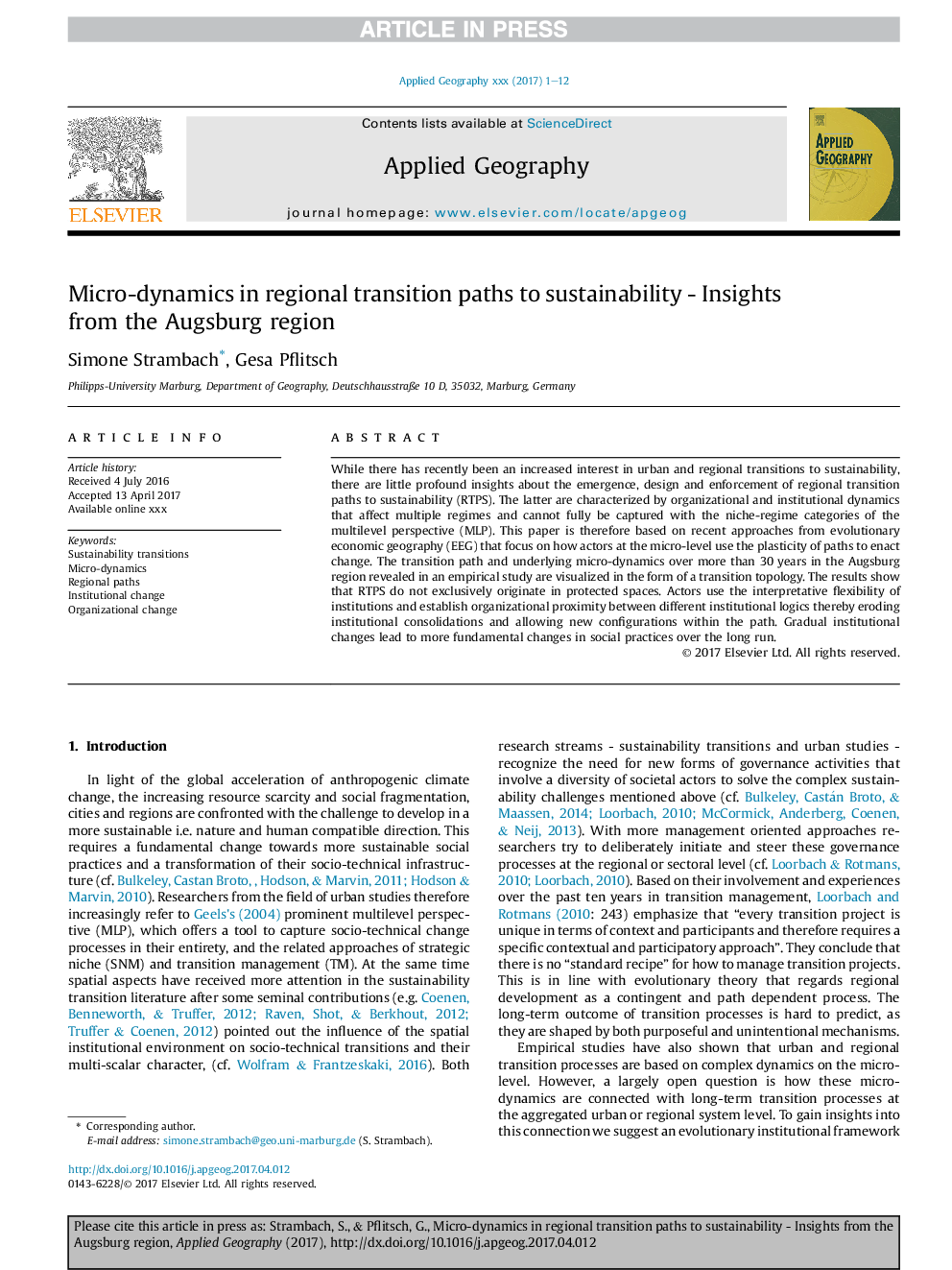| Article ID | Journal | Published Year | Pages | File Type |
|---|---|---|---|---|
| 6538343 | Applied Geography | 2018 | 12 Pages |
Abstract
While there has recently been an increased interest in urban and regional transitions to sustainability, there are little profound insights about the emergence, design and enforcement of regional transition paths to sustainability (RTPS). The latter are characterized by organizational and institutional dynamics that affect multiple regimes and cannot fully be captured with the niche-regime categories of the multilevel perspective (MLP). This paper is therefore based on recent approaches from evolutionary economic geography (EEG) that focus on how actors at the micro-level use the plasticity of paths to enact change. The transition path and underlying micro-dynamics over more than 30 years in the Augsburg region revealed in an empirical study are visualized in the form of a transition topology. The results show that RTPS do not exclusively originate in protected spaces. Actors use the interpretative flexibility of institutions and establish organizational proximity between different institutional logics thereby eroding institutional consolidations and allowing new configurations within the path. Gradual institutional changes lead to more fundamental changes in social practices over the long run.
Related Topics
Life Sciences
Agricultural and Biological Sciences
Forestry
Authors
Simone Strambach, Gesa Pflitsch,
